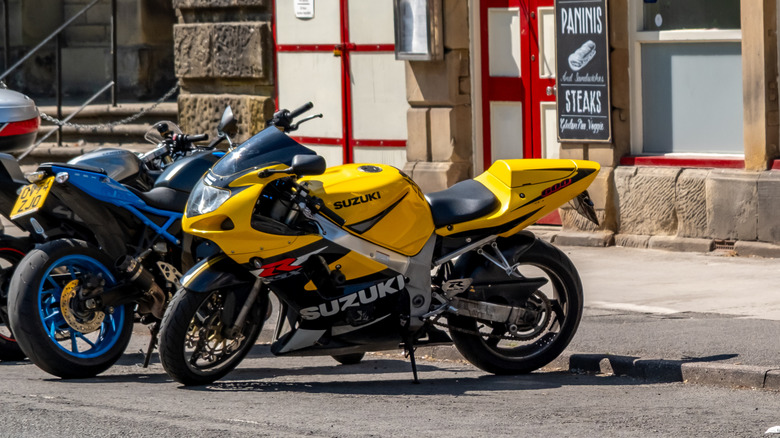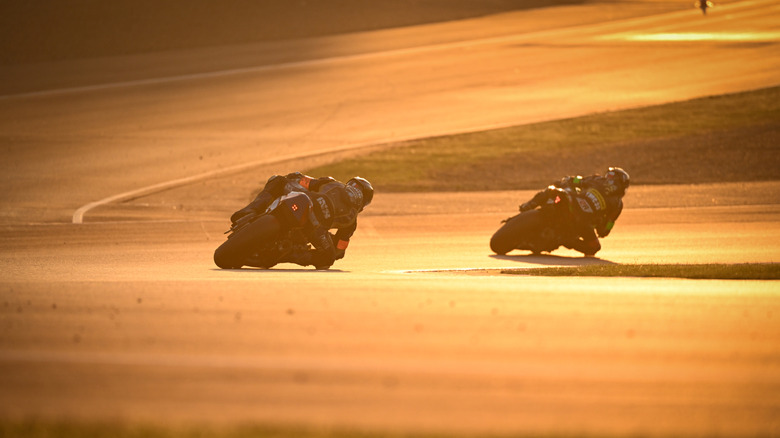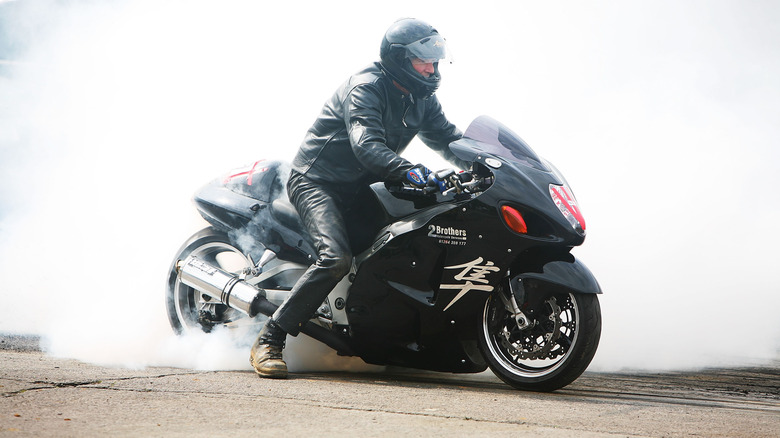Where Are Suzuki's Motorcycles Made, And Who Owns The Company Today?
The last hundred years have seen some of the most innovative motorcycle companies rise to prominence worldwide, with many advanced nations seemingly having a manufacturer that is not only known for robust and reliable machines, but also for some of the most powerful. In America, look no further than Indian Motorcycles and Harley-Davidson, industry giants that have shaped the American cruiser and tourer motorcycle scenes.
Across the ocean, companies like Aprilia and Ducati are making their mark on Europe, while in Asia, Japanese brands like Honda, Kawasaki, and Suzuki stand out as some of the major motorcycle brands you'll ever get to ride.
Suzuki, in particular, is making a name for itself by offering some of the most well-rounded motorcycles, whether they fall under the adventure touring or sportsbike categories. The company is a publicly traded entity, meaning its shares are owned by its shareholders.
Notable entities include General Motors (GM), the Master Trust Bank of Japan, the Custody Bank of Japan Ltd, and BlackRock Inc. Let's briefly review how it began, its historical shifts in the products it offers, and where its motorcycles are manufactured.
Suzuki started out with making looms
Like Kawasaki, Suzuki's history goes back over a hundred years. Also, like Kawasaki, Suzuki didn't begin as a motorcycle maker. The company was founded in October 1909 under the name Suzuki Loom Works by Michio Suzuki, an expert in looms, who started a business to supply the Japanese cotton and silk industries with looms for their operations.
Some 11 years later, the company became incorporated after undergoing a significant restructuring. It changed its name to Suzuki Loom Manufacturing Co., with Michio, the founder, taking the reins as president.
Through the first half of the 20th century, the company experienced its highs and lows, from closing and relocating some of its manufacturing plants due to World War II and battling through financial crises to listing on the Osaka, Nagoya, and Tokyo stock exchanges. However, in 1952, Suzuki would make a major shift in its products by finally entering a completely different market.
Suzuki's first two-wheeled vehicle was a motorized bicycle named the Power Free, which featured a 36cc, 2-cycle auxiliary engine. The bicycle gave riders the choice between pedaling like a traditional bike, riding with the engine's power similar to a motorcycle, or using a combination of both, where the engine assisted the rider as they pedaled.
As you might expect, the bicycle was an instant hit, with its features being considered state-of-the-art for their time. The company continued pushing down this route, finally changing its name to Suzuki Motor Co., Ltd., in June 1954.
Suzuki operates a number of facilities across the world
Suzuki would produce many vehicles over the decades, including powerful Suzuki motorcycles like the GSX-R1000, as well as cars such as the storied Suzuki Samurai, many of which still resonate with vehicle enthusiasts across the globe. Today, the company's motorcycles are manufactured in numerous countries worldwide.
Of course, one of the most notable of these manufacturing plants is located in Hamamatsu, Shizuoka Prefecture, Japan. It's a massive 700,000-square-foot plant whose construction began in 2014. Suzuki also operates a motorcycle factory in Gurugram, India; Jinan, China; Tambun and Cikarang in West Java, Indonesia; Thanyaburi in Pathum Thani, Indonesia; and Phnom Penh, the capital of Cambodia.
There are also facilities in Canlubang, Calamba City, Philippines; Bin Qasim, Karachi, Pakistan; La Emilia, Argentina; Pereira, Risaralda, Colombia; and Brazil. Suzuki also manufactures motorcycles in Taiwan through Tailing Motor Co. It has an automobile plant in Dong Nai's Bien Hoa City, Vietnam, and an ATV manufacturing plant in Rome, Georgia, in the United States.


